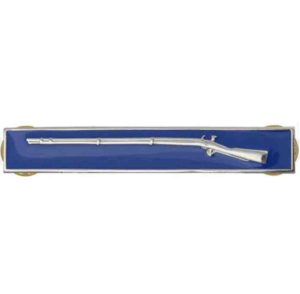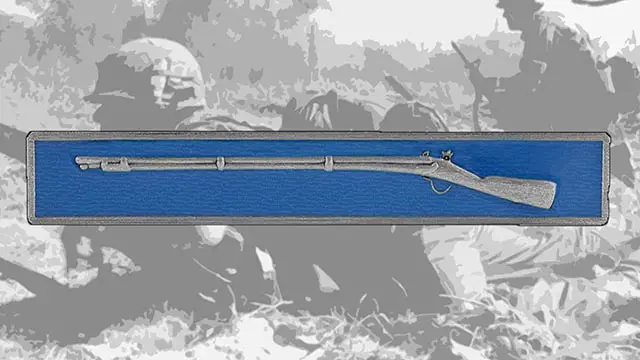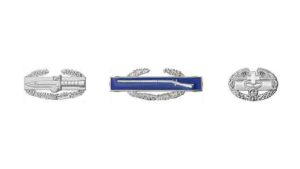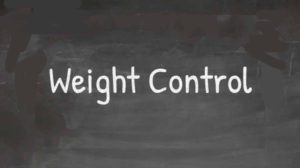The Expert Infantryman Badge
The United States Army Infantry has undergone many changes over time. Along with that, there have been changes to the Expert Infantryman Badge program as well. Reorganization and innovation not only affected the Infantry but also other Army branches as well. As part of the Army’s Transformation program, MOS consolidations, and new technologies have made changes to the Expert Infantryman Badge requirements and qualifications a necessity.

 Army leadership wanted to maintain the traditions of the Infantry branch while, at the same time, provide updated essential task lists and effectively manage training resources. To assist in the effort, those responsible for training development surveyed infantry units around the world asking for input on how the program could be improved. The feedback that they received played a major role in developing the Expert Infantryman Badge qualifications in their current form.
Army leadership wanted to maintain the traditions of the Infantry branch while, at the same time, provide updated essential task lists and effectively manage training resources. To assist in the effort, those responsible for training development surveyed infantry units around the world asking for input on how the program could be improved. The feedback that they received played a major role in developing the Expert Infantryman Badge qualifications in their current form.
Fundamental changes to the program include shifting some of the task from the qualification category to the eligibility category. In the past, the 12-mile road march, land navigation, PT test, and day and night qualifications on individual weapons were part of the actual test. Now, these tasks are prerequisites and must be completed before a soldier is eligible to take the Expert Infantryman Badge test.

The new testing program includes five training days of training and three days of testing for a total of eight days. During this time, soldiers will train for and execute testing at stations that allow them to demonstrate expertise on different essential Infantry skills. Successful completion of the program results in the award of the Expert Infantryman Badge. A soldier who earns this honor gains respect and earns the right to wear the award as a sign of high skill and accomplishment.

Background of the Expert Infantryman Badge
The Expert Infantryman Badge was created along with the Combat Infantryman Badge by executive order in November 1943 during World War II and is outlined in Army circular 269. Army Chief of Staff, George C. Marshall initiated the development of an Award to honor the U.S. Army Infantryman. At this time, the Office of Heraldic Activity of the Quartermaster General got to work on a design that would represent the United States Infantry’s hard core and critical role in combat.
Those soldiers who have been awarded both Infantry awards are not authorized to wear both both of them at the same time. In such cases, Army Regulations state that they are allowed to choose which badge they want to wear. Medical personnel are given the opportunity to earn similar badges, known as the Expert Medical Badge and the Combat Medical Badge.

Expert Infantryman Badge Description
The Expert Infantryman Badge is a silver and enamel rectangular bar shaped badge with a width of 3-inches (76 mm). There is an Infantry Blue field with a Model 1795 Springfield Arsenal Musket superimposed. The Springfield Model 1795 Musket was a .69 caliber flintlock musket invented by Eli Whitney and manufactured in the late 18th century and early 19th century at both the Springfield and Harper’s Ferry U.S. Armories. In fact, the Model 1795 was the first musket to be produced in the United States.
Expert Infantryman Badge Eligibility Requirements
Army Regulation 600-73 governs the Expert Infantry Badge testing.
EIB Testing Individual Eligibility Requirements
In order to participate in testing, each EIB candidate must fulfill the following eligibility requirements:
- They must hold active membership in the United States Army, USAR, or ARNG.
- They must hold a primary MOS in CMF 11 or 18B, 18C, 18E, 18F, 18Z, or 18A warrant officer’s position or be a commissioned officer in the infantry or in a Special Forces branch. An officer detailed by FB, PERSCOM to the infantry or to a Special Forces branch only meets this requirement during the time he is detailed to and serving in the infantry or Special Forces assignment.
- They must volunteer for EIB testing.
- They must meet the standard prescribed in AR 600-9, The Army Weight Control Program.
- They must pass APFT with 70% in each event for his age group.
- They must receive the recommendation of the current unit commander.
- They must qualify expert with the M16 series rifle/M4 carbine day (within last 12 months). The infrared laser must be conducted (PAQ-4 series) and AN-PVS-7B will be used for night qualifications to AIMSS standards IAW NO. 23-AIMSS (within the last six months of testing date).
- They must score expert on the 11C Gunner’s test if they hold an 11C MOS.
- They must pass land navigation with AN/PSN-11 (PLGR) (day) and night land navigation within six months of testing date.
- They must pass EIB standards for the 12-mile foot march within 90 days of testing date.
There is no limit on retests for the prerequisite tasks.

EIB Testing Unit Requirements
- All candidates take the test with a battalion-sized unit or larger.
- A testing unit may not award the EIB to any soldier not assigned or attached to that unit. The testing unit will test all prerequisite tasks. Score sheets for the prerequisite tasks are not transferable.
- A non-testing unit may not award the EIB.
- A commander will certify the prerequisite tasks by using the current score sheet, and the president of the board will verify.
- A commander may assign or attach a soldier to a testing unit for the sole purpose of testing if that soldier’s unit cannot conduct the EIB test.
- A commander may not assign or attach a soldier who fails the EIB test to a different unit in order to allow the soldier to retest.
- A candidate may take the EIB test only once each unit testing cycle, regardless of where he is assigned.
Commanders will carefully evaluate potential EIB candidates before recommending them to the EIB board. They will also be mindful that each candidate awarded the EIB will represent the standards of the EIB for the remainder of his military career.
Expert Infantryman Badge Testing
The table below lists the stations, points, and tasks for the Expert Infantryman Badge test. If a soldier fails one of the performance measures at a point, they will be required to retest. However, they are not required to retest the entire station, retesting consists only of the point that they failed. Expert Infantryman Badge candidates are only allowed two retests throughout the entire testing process.
Terminology
There are some slang vocabulary terms associated with the testing that most Infantry soldiers are familiar with. Some of the terms include:
- Badge Protector – A hard grader who seems to be protecting the award (graders have already earned the badge).
- Go – A blue mark indicating a task as been passed
- No Go – A red mark indicating a task has been failed
- Blade Running – Having two red marks (a third mark results in disqualification)
- True Blue – All blue marks indicating a completion of testing with a perfect score.
Scoring
The commander gives each soldier a soldier that is participating in testing a completed requirements sheet and a blank score sheet. The completed requirements sheet will specify the numbered location of each testing stake (station) so that the soldier will know where to go for each task. As the participant tests, the scorers complete the score sheets based on the examples for scoring. A blue mark represents a “pass” while a red mark represents a “fail”.
Uniforms
The prescribed uniforms for Expert Infantry Badge candidates consist of the appropriate physical fitness uniform and the combat uniform.

Physical Fitness Test
Candidates wear the standard Army physical fitness uniform. The uniform may be adjusted by the Commander as deemed appropriate due to seasonality.
All Other Stations
For all other stations, candidates wear the following uniform items in the manner prescribed by the unit SOP for normal tactical operations. Units equipped with assault vests and other equipment may, if directed by the EIB board, modify this list of equipment:
- Pistol belt with suspenders
- Ammunition pouches (2) with NATO magazines (6)
- Canteens with water (2), canteen covers (2), canteen cup (1)
- First-aid packet and case
- Poncho
- Kevlar helmet
- Bayonet and scabbard
- Protective mask and carrier
- M16 series rifle or M4 carbine with sling and magazine inserted
- Flashlight / chemical light, or both (night land navigation)

Table of Expert Infantryman Badge Stations, Points, and Tasks
The following table illustrates the tasks that a candidate must complete to receive an overall passing score for Expert Infantry Badge qualification.
[table id=6 /]


